
The Enchanting Thuringian Forest: Germany's Green Heart
Discover the Thuringian Forest, Germany's Green Heart, with its breathtaking landscapes, historic trails, and winter sports, offering an unforgettable adventure for all.
The Thuringian Forest, known as the 'Green Heart of Germany', is a lush, sprawling mountain range nestled in the heart of Germany. This enchanting region is famous for its dense forests, rolling hills, and picturesque villages. It offers a perfect blend of natural beauty, rich history, and outdoor activities, making it an ideal destination for nature lovers and adventure enthusiasts. One of the main attractions is the Rennsteig, Germany's oldest and most famous long-distance hiking trail. Spanning over 170 kilometers, this trail allows hikers to explore the pristine landscapes, historical landmarks, and diverse flora and fauna of the region. Along the way, you'll find charming guesthouses and traditional inns where you can rest and savor local delicacies. In addition to hiking, the Thuringian Forest is a paradise for winter sports. The region boasts several ski resorts, including Oberhof, which is renowned for its cross-country skiing and biathlon facilities. During the winter months, the snow-covered landscapes transform into a winter wonderland, offering activities such as skiing, snowboarding, and tobogganing. History buffs will appreciate the cultural heritage of the Thuringian Forest. The region is dotted with historic castles, medieval towns, and ancient mines. Visit the Wartburg Castle, a UNESCO World Heritage Site, where Martin Luther translated the New Testament. Explore the charming town of Schmalkalden, with its half-timbered houses and rich history dating back to the Middle Ages. Whether you're seeking outdoor adventure, cultural experiences, or simply a peaceful retreat in nature, the Thuringian Forest has something for everyone. Its serene landscapes, combined with its rich history and vibrant culture, make it a must-visit destination in Germany.
Local tips in Thuringian Forest
- Visit in autumn for the most stunning foliage views and fewer crowds.
- Pack layers, as weather can vary greatly even in a single day.
- Try the local Thuringian sausages; they are a regional specialty.
- Book accommodations in advance during peak seasons, especially in winter.
- Don't miss the Oberhof ski resort for excellent winter sports facilities.
The Enchanting Thuringian Forest: Germany's Green Heart
The Thuringian Forest, known as the 'Green Heart of Germany', is a lush, sprawling mountain range nestled in the heart of Germany. This enchanting region is famous for its dense forests, rolling hills, and picturesque villages. It offers a perfect blend of natural beauty, rich history, and outdoor activities, making it an ideal destination for nature lovers and adventure enthusiasts. One of the main attractions is the Rennsteig, Germany's oldest and most famous long-distance hiking trail. Spanning over 170 kilometers, this trail allows hikers to explore the pristine landscapes, historical landmarks, and diverse flora and fauna of the region. Along the way, you'll find charming guesthouses and traditional inns where you can rest and savor local delicacies. In addition to hiking, the Thuringian Forest is a paradise for winter sports. The region boasts several ski resorts, including Oberhof, which is renowned for its cross-country skiing and biathlon facilities. During the winter months, the snow-covered landscapes transform into a winter wonderland, offering activities such as skiing, snowboarding, and tobogganing. History buffs will appreciate the cultural heritage of the Thuringian Forest. The region is dotted with historic castles, medieval towns, and ancient mines. Visit the Wartburg Castle, a UNESCO World Heritage Site, where Martin Luther translated the New Testament. Explore the charming town of Schmalkalden, with its half-timbered houses and rich history dating back to the Middle Ages. Whether you're seeking outdoor adventure, cultural experiences, or simply a peaceful retreat in nature, the Thuringian Forest has something for everyone. Its serene landscapes, combined with its rich history and vibrant culture, make it a must-visit destination in Germany.
When is the best time to go to Thuringian Forest?
Unmissable attractions to see
Wartburg
Discover the rich history and breathtaking views at Wartburg Castle, a UNESCO World Heritage Site in Eisenach, Germany.

Talsperre Heyda
Explore the breathtaking beauty and outdoor adventures at Talsperre Heyda, a serene reservoir nestled in the heart of Ilmenau, Germany.
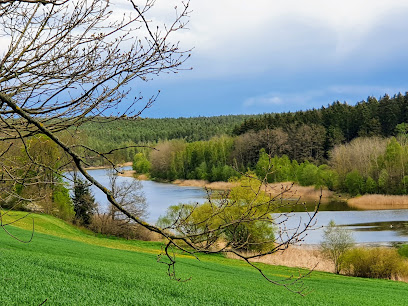
Rennsteiggarten Oberhof
Explore the enchanting Rennsteiggarten Oberhof, a botanical paradise in the heart of Thuringia, showcasing diverse plant species and serene landscapes.

Schneekopfturm
Discover breathtaking views and hiking adventures at Schneekopfturm, the iconic observation tower in Gehlberg, Thuringia.

Rondell Oberhof
Explore the historic Rondell Oberhof, a captivating landmark in Oberhof, Germany, surrounded by stunning nature and rich cultural heritage.
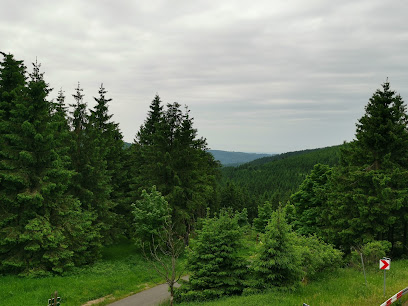
Plänckners Aussicht
Discover the breathtaking views of Plänckners Aussicht, a stunning observation deck atop Grosser Beerberg in the Thuringian Forest.
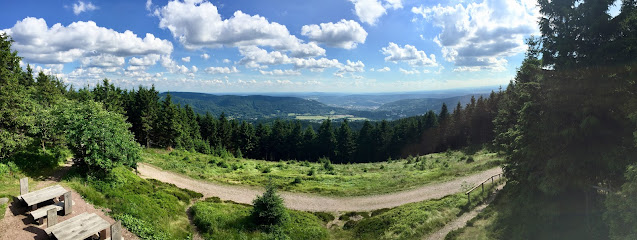
Elfengrotte
Explore Elfengrotte: A breathtaking hiking area in Eisenach, where nature's beauty and enchanting folklore come together for an unforgettable adventure.
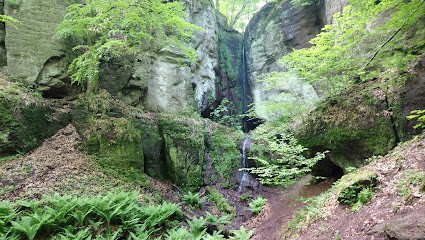
Schneekopfmoor am Teufelskreis
Immerse yourself in the breathtaking natural beauty of Schneekopfmoor am Teufelskreis, a serene escape in Gehlberg, perfect for nature lovers and adventurers.
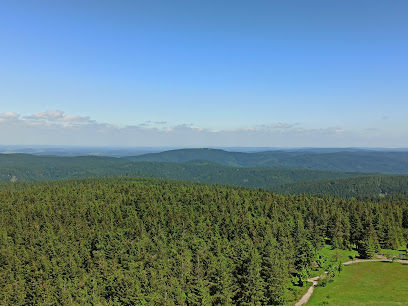
Jagdhaus Gabelbach
Explore the natural beauty and cultural heritage of Jagdhaus Gabelbach in Ilmenau, where hiking trails meet fascinating history.
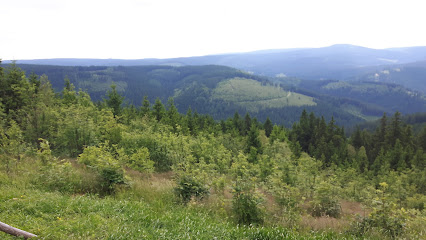
Schützenbergmoor
Discover the tranquil beauty of Schützenbergmoor, a nature preserve in Steinbach-Hallenberg, perfect for hiking, birdwatching, and reconnecting with nature.
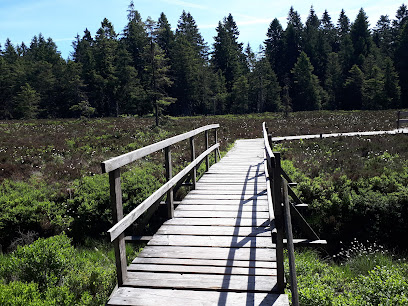
Glas-/Wilderer-/Wettermuseum
Explore the unique Glas-Wilderer Wettermuseum in Gehlberg, where glassmaking meets meteorology in a captivating cultural experience.
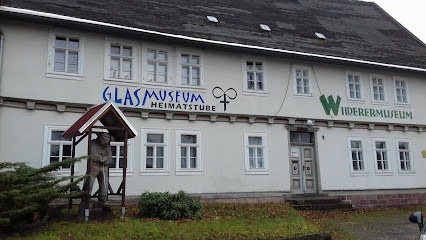
Deutsches Thermometermuseum Geraberg
Discover the unique world of temperature measurement at Deutsches Thermometermuseum Geraberg, where history meets science in a charming setting.
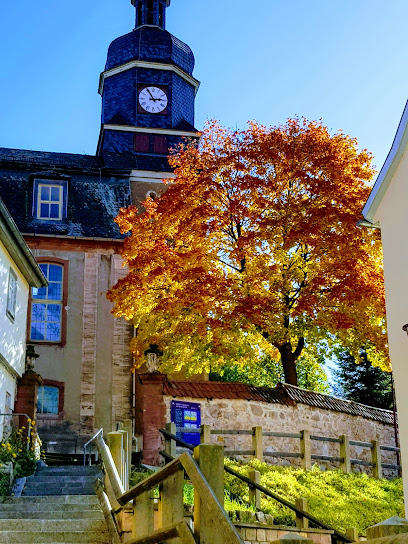
Goethehäuschen
Explore Goethehäuschen in Ilmenau, a historical gem celebrating the legacy of Johann Wolfgang von Goethe amidst stunning natural beauty.

Goethe-Felsen
Explore Goethe-Felsen, a scenic hiking area in Elgersburg, where breathtaking views and natural beauty await every adventurer.
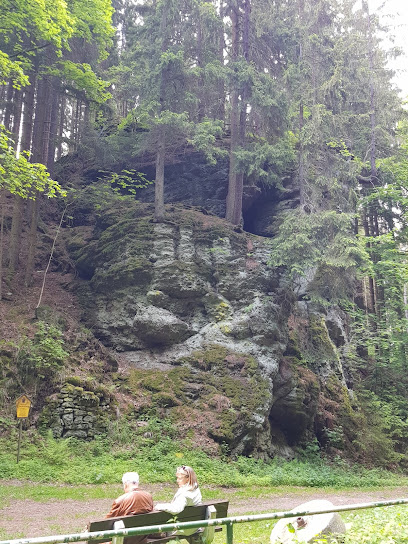
Seiffartsburg
Discover the breathtaking hiking trails and historical allure of Seiffartsburg, a natural gem nestled in the heart of Gehlberg, Germany.
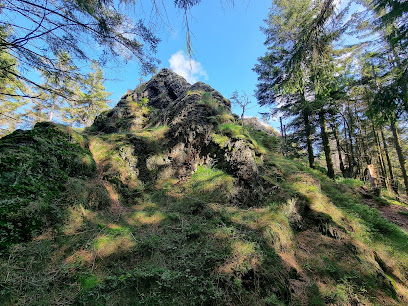
Essential places to dine
Cortina Oberhof
Discover authentic Northern Italian cuisine at Cortina Oberhof - where every meal tells a story amidst stunning German landscapes.

Gasthaus Zur Wegscheide
Discover authentic German flavors at Gasthaus Zur Wegscheide—an inviting inn serving delicious barbecue and traditional dishes amidst stunning landscapes.
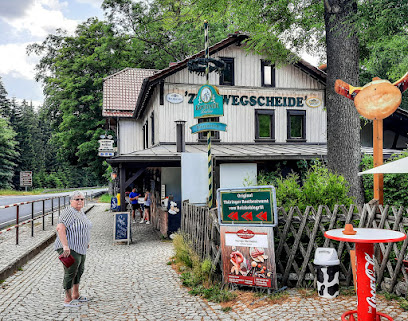
Beim Waldschrat
Discover authentic German cuisine at Beim Waldschrat in Oberhof - where culinary tradition meets cozy ambiance.
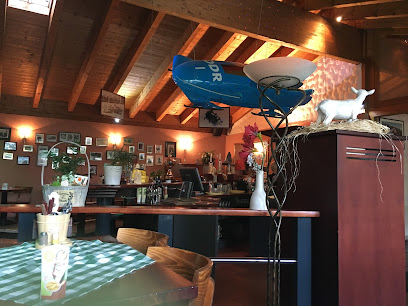
Bahnhof Rennsteig - Thüringer Waldlokal
Discover authentic German cuisine at Bahnhof Rennsteig - a historic restaurant nestled in the scenic Thüringer Wald.
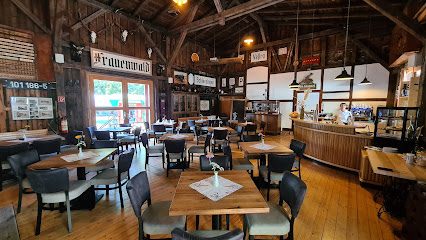
Berggaststätte Kickelhahn
Discover authentic German cuisine amidst stunning landscapes at Berggaststätte Kickelhahn - your perfect escape in Ilmenau.
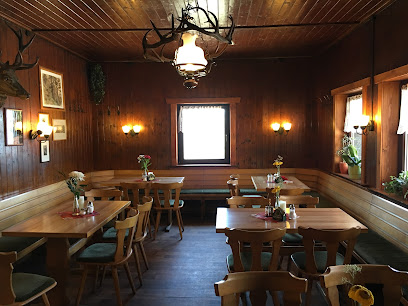
Zur Post
Discover traditional German flavors at Zur Post in Ilmenau - a cozy restaurant with a delightful beer garden offering authentic Thuringian cuisine.
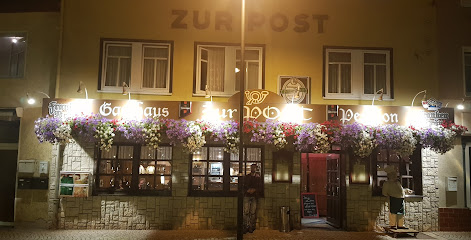
Restaurant Zur Schortemühle
Discover the flavors of Germany at Restaurant Zur Schortemühle in Ilmenau – where tradition meets taste in a charming atmosphere.
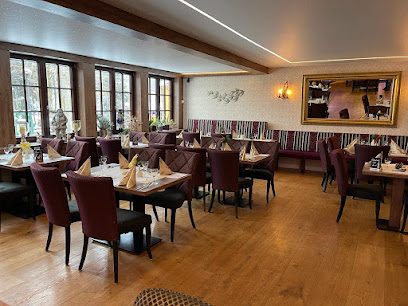
Waldgasthaus Mönchhof
Experience authentic Thuringian cuisine at Waldgasthaus Mönchhof, nestled in Elgersburg's stunning natural landscapes.
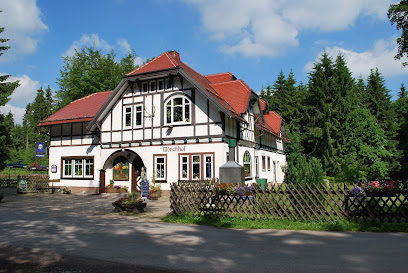
Gasthaus Naturheilgarten
Discover the flavors of Germany at Gasthaus Naturheilgarten – a delightful blend of tradition and taste in Suhl.
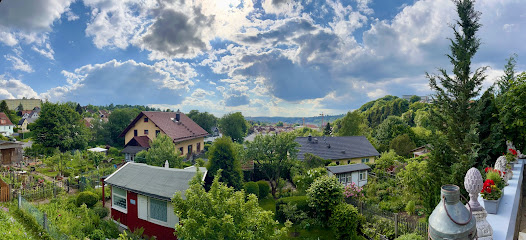
Forsthaus Sattelbach
Discover authentic German flavors at Forsthaus Sattelbach in Oberhof - where tradition meets taste amidst stunning natural beauty.
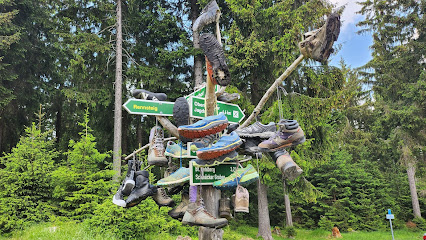
Restaurant Schmücke
Experience authentic Thuringian cuisine in a charming setting at Restaurant Schmücke - perfect for tourists exploring Gehlberg's beauty.
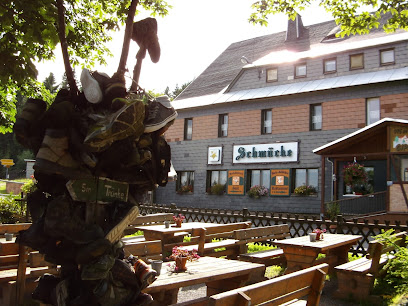
Gasthaus Hohe Warte
Discover traditional Thuringian flavors at Gasthaus Hohe Warte in Elgersburg - an unforgettable culinary journey awaits.
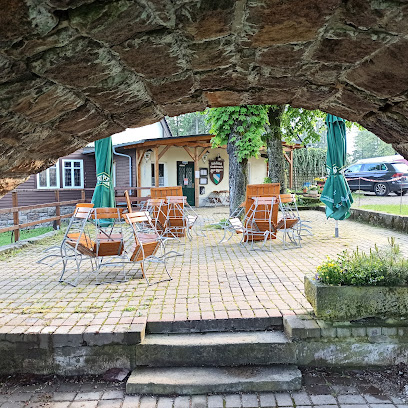
Waldschenke am Geiersberg - Thomas Körmer
Experience authentic German cuisine amidst breathtaking views at Waldschenke am Geiersberg in Goldlauter-Heidersbach.
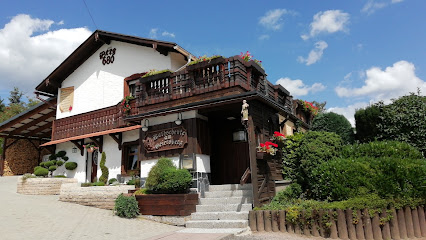
Gaststätte & Pension Waldschlösschen
Experience traditional German hospitality at Gaststätte & Pension Waldschlösschen in Oberhof—your gateway to nature's wonders.
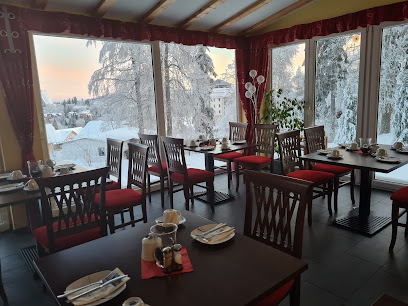
Restaurant & Pension Luisensitz
Experience authentic German and Thuringian cuisine at Restaurant & Pension Luisensitz in beautiful Oberhof.
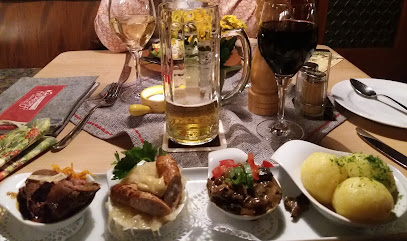
Markets, malls and hidden boutiques
ANGER 1 Erfurt
Explore ANGER 1 Erfurt for a unique shopping experience intertwining local culture, dining, and entertainment in the heart of the city.
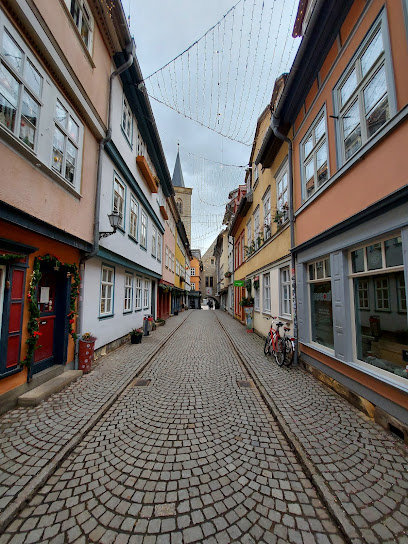
Thüringen Park Erfurt
Explore Thüringen Park Erfurt, a vibrant shopping mall brimming with diverse shops, delightful eateries, and a lively atmosphere perfect for every visitor.

Gera Arcaden
Discover Gera Arcaden, a vibrant shopping mall in Gera, Germany, offering a rich blend of retail, dining, and entertainment options for an unforgettable experience.

Dragon Gorge
Explore the breathtaking beauty and enchanting trails of Dragon Gorge, a premier hiking area in Eisenach, Germany, perfect for nature lovers and adventure seekers.

Neue Mitte Jena
Explore the modern shopping experience at Neue Mitte Jena, where retail therapy meets local culture in a vibrant setting.
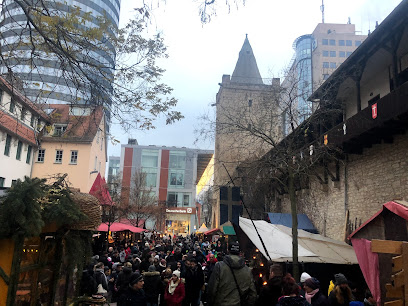
Marienglashöhle cave
Discover the stunning formations of Marienglashöhle Cave in Friedrichroda, a must-visit natural attraction for adventure seekers and nature lovers.

Shirtinator T-shirt printing
Create your unique keepsake at Shirtinator T-shirt Printing, where personalization meets creativity in the heart of the city.

Burgaupark Jena
Discover Burgaupark Jena, a vibrant shopping mall offering a delightful mix of retail, dining, and entertainment experiences in the heart of Jena.

Heidecksburg Castle
Explore Heidecksburg Castle, a stunning museum and historical landmark in Rudolstadt, showcasing art, history, and breathtaking views of the Thuringian landscape.
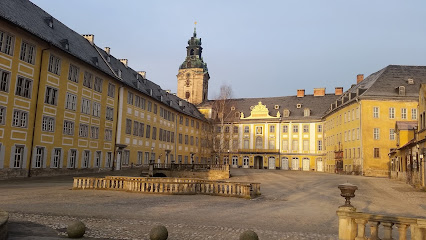
Saalfeld Fairy Grottoes
Explore the Saalfeld Fairy Grottoes, a magical underground realm in Germany filled with stunning formations and enchanting scenery.
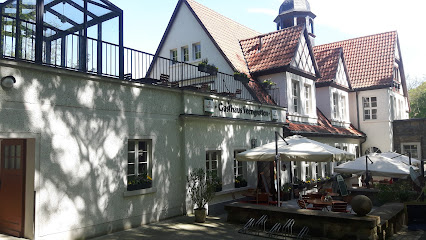
Thuringian Forest
Discover the breathtaking landscapes and rich cultural heritage of the Thuringian Forest, a paradise for nature lovers and adventure seekers in Germany.
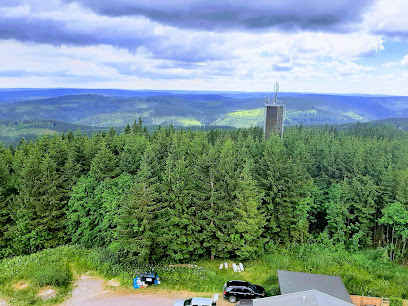
Thüringer Wald Service GmbH
Discover essential groceries and local delights at Thüringer Wald Service GmbH, your one-stop convenience store in Neuhaus am Rennweg.
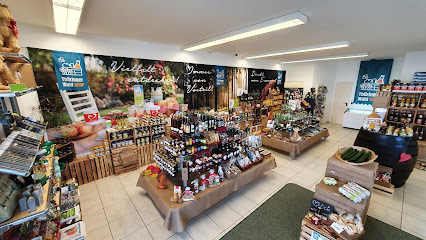
Thüringer Wald Shop
Discover local flavors and essentials at Thüringer Wald Shop, your convenient stop for quality groceries in Neuhaus am Rennweg.
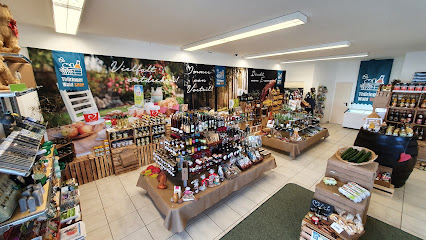
Seelenhundliebe
Seelenhundliebe: Where pet lovers find quality supplies and a community of fellow animal enthusiasts.

Jagd1
Discover your outdoor adventure essentials at Jagd1, the ultimate destination for high-quality clothing and equipment for nature lovers.

Essential bars & hidden hideouts
Hemingway Bar & Lounge - Erfurt
Experience the charm of Erfurt's nightlife at Hemingway Bar & Lounge, where exquisite cocktails meet elegant ambiance.
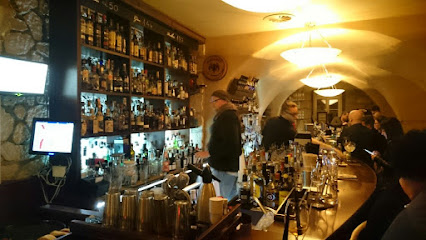
Shakes Beer
Experience the charm of Irish hospitality at Shakes Beer, Oberhof's premier pub for delicious food and a lively atmosphere.
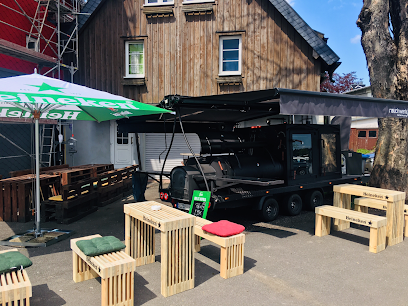
O‘ Tooles Irish Pub
Discover the heart of Irish culture at O' Tooles Irish Pub in Eisenach, offering delicious food, a wide drink selection, and vibrant live entertainment.
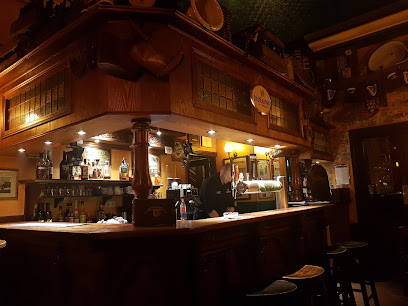
AQUI, Bar und Pub
Discover Ilmenau's vibrant nightlife at AQUI, Bar und Pub, where Western and Continental cuisine meets a lively atmosphere.

Kleinkunstkneipe Schorschl
Discover the vibrant nightlife of Eisenach at Kleinkunstkneipe Schorschl, where culture and camaraderie come alive with every performance.
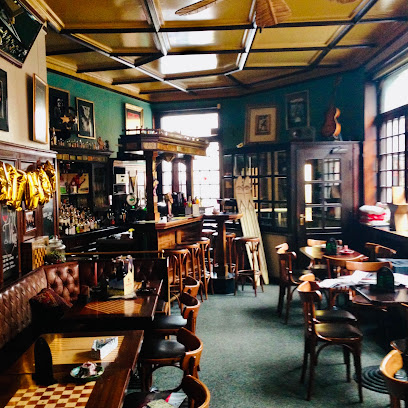
Klappertopf
Experience the lively atmosphere and local flavors at Klappertopf, Eisenach's cozy pub for drinks, snacks, and sports.
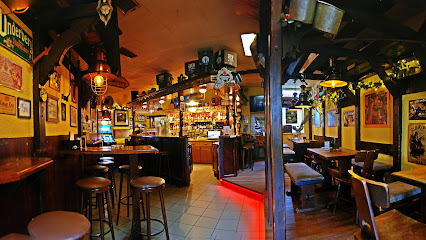
Paul's
Discover the lively nightlife of Oberhof at Paul's Bar, where great drinks and unforgettable experiences await in a vibrant setting.
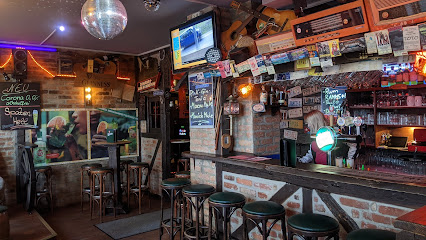
Fame Tanz- und Cocktailbar Restaurant
Discover the vibrant nightlife of Suhl at Fame Tanz- und Cocktailbar, where great cocktails and dancing await you.
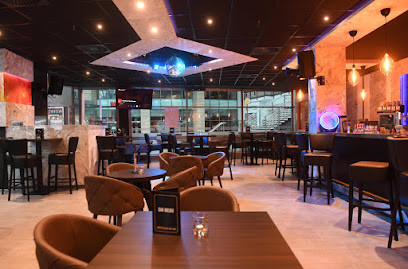
Corner’s Club 54
Discover the vibrant nightlife at Corner’s Club 54 in Eisenach, where cocktails and bistro delights create an unforgettable experience for all.
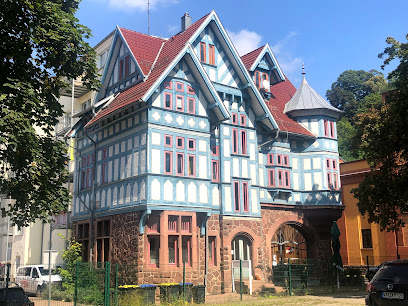
Iustinas-Sports Bar Ilmenau
Experience the thrill of sports and camaraderie at Iustinas-Sports Bar in Ilmenau, a must-visit destination for sports enthusiasts.
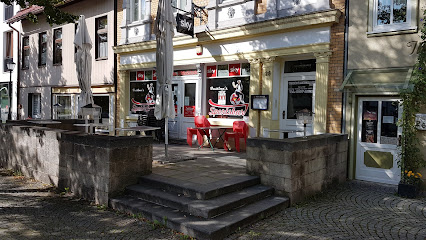
Havanna Bar
Experience the vibrant tropical atmosphere at Havanna Bar in Ilmenau, where delightful cocktails and good vibes await every visitor.
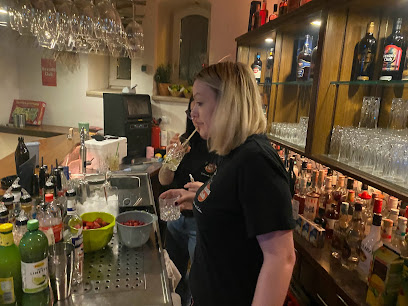
Katsensprung
Discover the vibrant atmosphere of Katsensprung, Eisenach's favorite bar, blending cocktails, local beers, and a cozy beer garden experience.
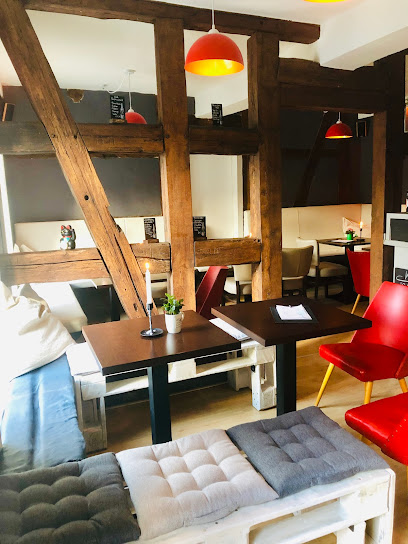
Mauerwerk
Discover Mauerwerk, a charming bar in Zella-Mehlis, offering a cozy atmosphere and delightful drinks perfect for unwinding after your adventures.

Fliegerbar Masserberg
Discover Fliegerbar Masserberg, where refreshing drinks meet breathtaking views in the heart of the Thuringian Forest.

Waldbar
Discover Waldbar in Oberhof: A charming cocktail bar with a cozy beer garden, perfect for unwinding after your adventures in this beautiful region of Germany.
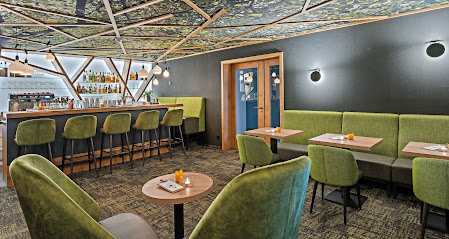
Local Phrases about Thuringian Forest
-
- HelloHallo
[hah-loh] - GoodbyeTschüss
[tshooss] - YesJa
[yah] - NoNein
[nine] - Please/You're welcomeBitte
[bih-tuh] - Thank youDanke
[dahn-kuh] - Excuse me/SorryEntschuldigung
[ent-shool-dee-goong] - How are you?Wie geht es dir?
[vee gayt es deer] - Fine. And you?Gut. Und dir?
[goot oont deer] - Do you speak English?Sprichst du Englisch?
[shprikhst doo eng-lish] - I don't understandIch verstehe nicht
[ikh fer-shtay-uh nikht]
- HelloHallo
-
- I'd like to see the menu, pleaseIch möchte bitte die Speisekarte sehen
[ikh merkhtuh bih-tuh dee spai-zuh-kahr-tuh zay-en] - I don't eat meatIch esse kein Fleisch
[ikh es-suh kine fli-sh] - Cheers!Prost!
[prohst] - I would like to pay, pleaseIch würde gerne bezahlen, bitte
[ikh vur-duh gair-nuh buh-tzah-len, bih-tuh]
- I'd like to see the menu, pleaseIch möchte bitte die Speisekarte sehen
-
- Help!Hilfe!
[hil-fuh] - Go away!Geh weg!
[geh vehg] - Call the Police!Rufen Sie die Polizei!
[roo-fen zee dee poh-lee-tsy] - Call a doctor!Rufen Sie einen Arzt!
[roo-fen zee iyn-en ahrts] - I'm lostIch habe mich verirrt
[ikh hah-buh meesh fayr-eert] - I'm illIch bin krank
[ikh been krank]
- Help!Hilfe!
-
- I'd like to buy...Ich möchte kaufen...
[ikh merkhtuh kow-fen] - I'm just lookingIch schaue nur
[ikh shou-uh noor] - How much is it?Wie viel kostet es?
[vee feel kos-tet es] - That's too expensiveDas ist zu teuer
[dahs ist tsoy too-er] - Can you lower the price?Können Sie den Preis senken?
[kern-en zee den prees zen-ken]
- I'd like to buy...Ich möchte kaufen...
-
- What time is it?Wie spät ist es?
[vee shpayt ist es] - It's one o'clockEs ist ein Uhr
[es ist iyn oor] - Half past (10)Halb elf
[halb elf] - MorningMorgen
[mor-gen] - AfternoonNachmittag
[nahk-mit-tahk] - EveningAbend
[ah-bend] - YesterdayGestern
[gehs-tern] - TodayHeute
[hoy-tuh] - TomorrowMorgen
[mor-gen] - 1Eins
[iyns] - 2Zwei
[tsvai] - 3Drei
[dray] - 4Vier
[feer] - 5Fünf
[fuunf] - 6Sechs
[zeks] - 7Sieben
[zee-ben] - 8Acht
[ahkht] - 9Neun
[noyn] - 10Zehn
[tsayn]
- What time is it?Wie spät ist es?
-
- Where's a/the...?Wo ist ein/der...?
[voh ist iyn/dehr] - What's the address?Was ist die Adresse?
[vas ist dee ah-dreh-seh] - Can you show me (on the map)?Können Sie mir das zeigen (auf der Karte)?
[kern-en zee meer dahs tsay-gen (owf dehr kahr-teh)] - When's the next (bus)?Wann fährt der nächste (Bus)?
[vahn fairt dehr nekhs-teh (boos)] - A ticket (to ....)Eine Fahrkarte (nach ....)
[iyn-uh fahr-kahr-teh (nakh)]
- Where's a/the...?Wo ist ein/der...?
History of Thuringian Forest
-
The Thuringian Forest has been a cradle of human activity since prehistoric times. Archaeological finds suggest that early settlers inhabited the region as far back as the Neolithic period. The dense forests and fertile valleys provided ample resources for the early communities, who left behind numerous artifacts, including pottery and tools, testifying to their way of life.
-
During the Middle Ages, the Thuringian Forest became a strategic region dotted with numerous castles and fortresses. Notable among these is the Wartburg Castle, a UNESCO World Heritage site, which was founded in 1067. This historic fortress played a key role in German history, serving as a refuge for Martin Luther during his translation of the New Testament into German.
-
In the 13th and 14th centuries, the Thuringian Forest region saw the rise of multiple small states and principalities. The fragmentation of power led to the creation of entities such as the Landgraviate of Thuringia and the Duchy of Saxe-Gotha-Altenburg. These states played pivotal roles in the political landscape of the Holy Roman Empire.
-
The Thuringian Forest was a significant backdrop during the Protestant Reformation. Martin Luther's translation of the New Testament at Wartburg Castle between 1521 and 1522 had a profound impact on the spread of Protestantism. The area became a hotbed for religious and intellectual movements that shaped modern European history.
-
The 19th century brought industrialization to the Thuringian Forest. The region's abundant natural resources, including timber and minerals, spurred the development of industries such as glassmaking, woodworking, and metalworking. Towns like Suhl and Ilmenau emerged as industrial hubs, contributing to the economic transformation of Thuringia.
-
During World War II, the Thuringian Forest was the site of numerous military operations and significant strategic importance. Post-war, the region found itself in East Germany under Soviet influence. The Cold War era saw the forest being used for both military training and as a restricted border zone, adding layers of complexity to its historical narrative.
-
Today, the Thuringian Forest is a region that beautifully combines its rich historical heritage with natural beauty. It is a popular destination for tourists seeking to explore its medieval castles, historic towns, and scenic hiking trails. The Rennsteig, a long-distance hiking path, offers a journey through both the natural splendor and the historical depth of the area.
Thuringian Forest Essentials
-
The Thuringian Forest is located in central Germany. The nearest major airports are Frankfurt International Airport (FRA) and Leipzig/Halle Airport (LEJ). From Frankfurt, you can take a direct train to Erfurt, the capital of Thuringia, which takes about 2 hours. Leipzig/Halle Airport is closer, and a train to Erfurt takes approximately 1.5 hours. Alternatively, you can rent a car from either airport and drive to Thuringia. The region is well-connected by the German Autobahn network, making it accessible by road.
-
Public transportation in the Thuringian Forest is reliable and extensive, including trains, buses, and trams. The Deutsche Bahn (DB) operates frequent train services connecting major towns and cities. For local travel, buses and regional trains are available. Renting a car can offer more flexibility, especially for exploring the forest and less accessible areas. Biking is also a popular option, with numerous well-marked cycling paths.
-
Germany uses the Euro (EUR) as its official currency. Credit and debit cards are widely accepted in most hotels, restaurants, and shops. However, it's advisable to carry some cash, especially when visiting rural areas or small towns where smaller establishments may not accept cards. ATMs are widely available in cities and towns.
-
The Thuringian Forest is generally a safe destination for tourists. Standard precautions should be followed, such as not leaving valuables unattended and being aware of your surroundings in crowded places. There are no specific high-crime areas targeting tourists, but always stay vigilant, especially in train stations and busy tourist spots.
-
In case of emergency, dial 112 for immediate assistance, which connects you to emergency services including police, fire, and medical. Hospitals and clinics are available in major towns like Erfurt, Weimar, and Eisenach. It's advisable to have travel insurance that covers medical emergencies. Pharmacies ('Apotheke') are widely available for minor health issues.
-
Fashion: Do dress in layers, especially if you're hiking, as weather can change rapidly in the forest. Avoid overly casual attire when dining in finer restaurants. Religion: Do respect local customs and traditions. Some areas may have churches and monasteries; always dress modestly when visiting. Public Transport: Do be punctual and respectful. Offer your seat to elderly or disabled passengers. Don't be loud or eat on public transport. Greetings: Do greet people with a 'Guten Tag' (Good day) or 'Hallo' (Hello). A firm handshake is customary. Eating & Drinking: Do try local specialties like Thuringian sausages and potato dumplings. Don't forget to tip, as it's customary to round up the bill.
-
To experience the Thuringian Forest like a local, visit smaller villages and towns like Schmalkalden and Ilmenau. Participate in local festivals such as the Thuringian Bach Festival and the Christmas markets. Hiking is a beloved local activity; trails like the Rennsteig offer panoramic views and a chance to mingle with locals. Try local foods from family-run restaurants and engage with residents who are often willing to share stories about their region's rich history.
Nearby Cities to Thuringian Forest
-
Things To Do in Wurzburg
-
Things To Do in Leipzig
-
Things To Do in Nuremberg
-
Things To Do in Rothenburg ob der Tauber
-
Things To Do in Karlovy Vary
-
Things To Do in Frankfurt
-
Things To Do in Hannover
-
Things To Do in Plzeň
-
Things To Do in Dresden
-
Things To Do in Heidelberg
-
Things To Do in Koblenz
-
Things To Do in Stuttgart
-
Things To Do in Potsdam
-
Things To Do in Bonn
-
Things To Do in Prague













